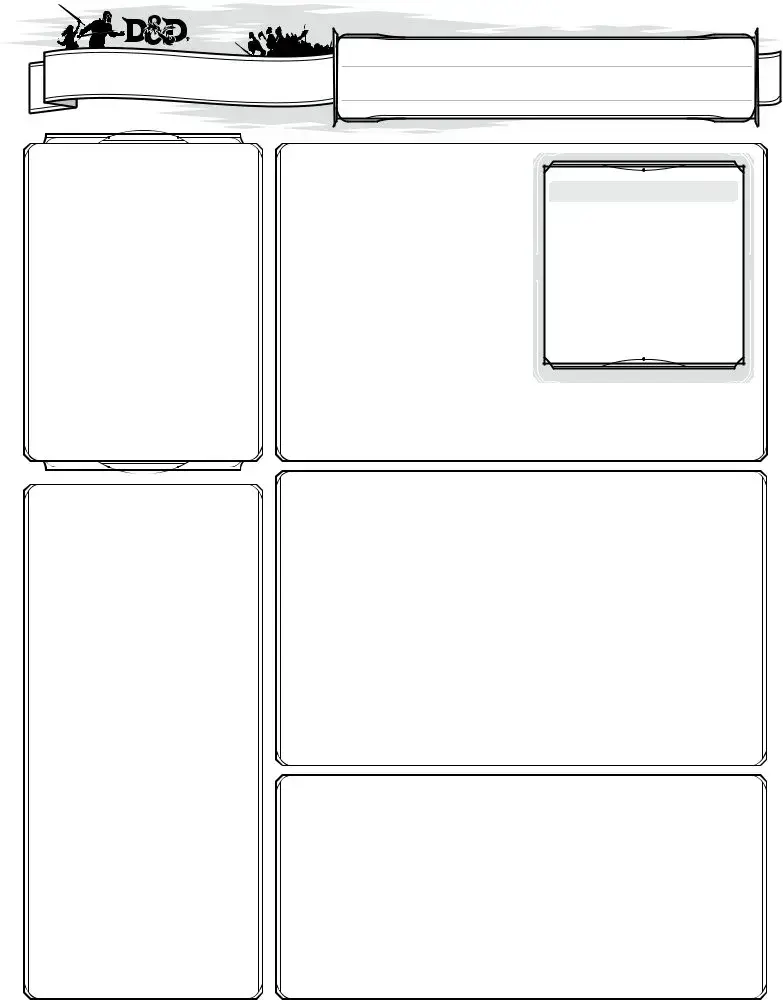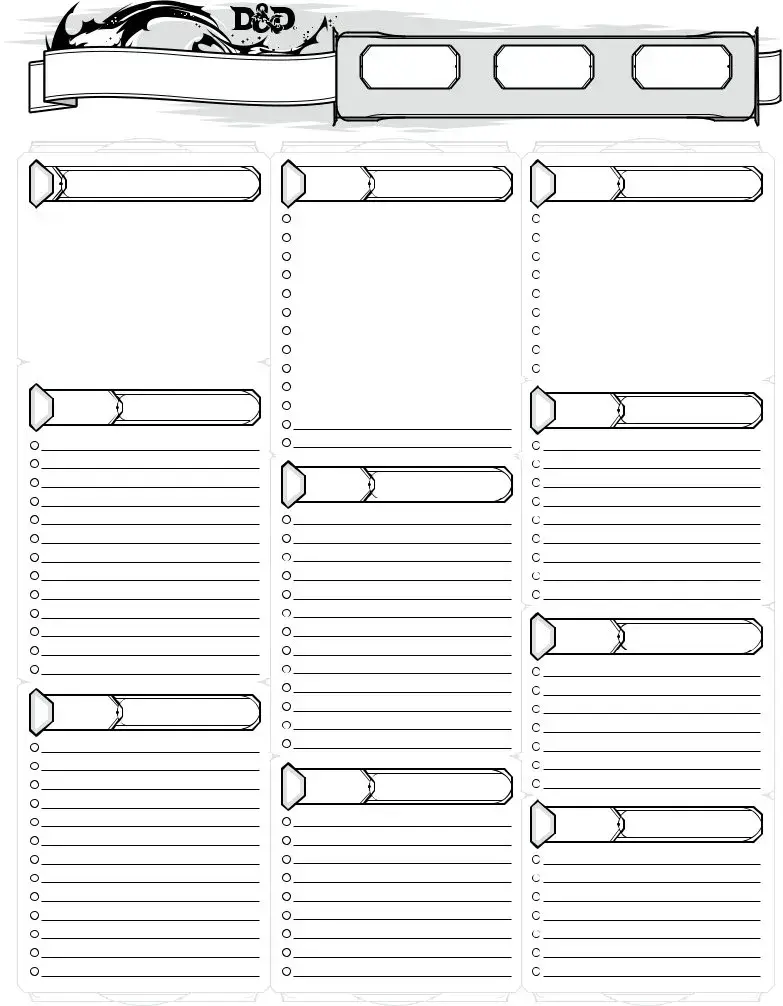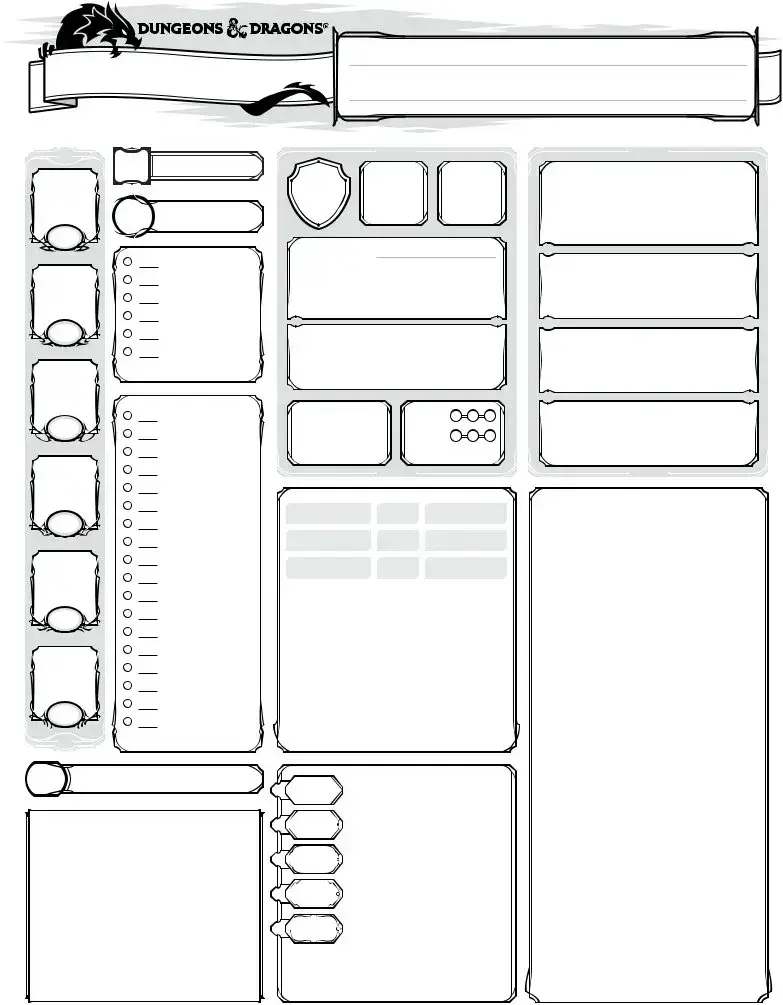What is a DnD Character Sheet?
A Dungeons and Dragons (DnD) Character Sheet is a document used by players to keep track of various aspects of their DnD characters. It includes details such as the character's name, race, class, abilities, spells, equipment, and background story. The purpose of the sheet is to streamline gameplay and ensure accurate and efficient tracking of character progress and status.
How do I fill out a DnD Character Sheet?
Filling out a DnD Character Sheet involves several steps:
-
Choose your character's race and class, which will influence their abilities and specialties.
-
Determine ability scores, either by rolling dice or using a point-buy system, and allocate them to attributes like strength, dexterity, and intelligence.
-
Fill in your character's background, including their personal history, alignment, and other roleplaying elements.
-
Select equipment and weapons based on your class and background.
-
Note down any special skills, spells, or abilities your character has access to.
Each character sheet may have specific sections dedicated to these aspects for ease of organization.
Where can I find a DnD Character Sheet to use?
DnD Character Sheets can be found in a variety of places:
-
The official Dungeons and Dragons website offers downloadable, printable character sheets.
-
Many third-party websites and gaming communities offer custom character sheet templates.
-
Digital tools and apps designed for DnD gameplay often include digital character sheet functionalities.
It's advisable to choose a version that suits your game's edition and personal preferences.
Can I create a DnD Character Sheet digitally?
Yes, you can create a DnD Character Sheet digitally. There are several online platforms, apps, and software tools that allow players to fill out and save their character sheets electronically. These digital tools often include additional functionalities like automatic calculations for abilities and interactive features to enhance gameplay and organization.
What should I do if I make a mistake on my Character Sheet?
If you make a mistake on your Character Sheet, you can easily correct it, especially if you're using a pencil for a paper sheet or a digital tool that allows editing. For minor errors, a simple erasure or digital edit will suffice. For major changes, such as those impacting your character's fundamental attributes or backstory, it's best to consult with your Dungeon Master (DM) to ensure the changes align with the game's rules and narrative.
Are there different types of Character Sheets for different versions of DnD?
Yes, there are different types of Character Sheets for various versions of DnD. Each version of the game, from older editions like 2nd Edition to newer ones like 5th Edition, has its own specific set of rules and, consequently, its own tailored character sheets. These sheets emphasize the information and mechanics relevant to that edition. Always make sure to use the character sheet that corresponds to your game's edition.
Can I customize my DnD Character Sheet?
While standard DnD Character Sheets provide all the necessary fields for gameplay, players and DMs often customize these sheets to better suit their playstyle or campaign. Customizations can range from adding additional sections for backstory and inventory management to tweaking layout and design for clarity. Custom character sheets should still include all critical information to ensure gameplay integrity.
The most important information on a DnD Character Sheet includes:
-
Character basics (name, race, class, level)
-
Ability scores (Strength, Dexterity, Constitution, Intelligence, Wisdom, Charisma)
-
Skills and proficiencies
-
Equipment and weapons
-
Spells and abilities for spellcasting classes
-
Background and roleplaying notes such as alignment and backstory
This information is critical for both gameplay mechanics and character development.
Is a DnD Character Sheet necessary for gameplay?
While it is technically possible to play DnD without a formal Character Sheet, using one greatly enhances gameplay. A Character Sheet serves as a vital reference point for players, allowing for organized tracking of a character's progress, abilities, and inventory. It also helps DMs keep track of the party's capabilities and tailor challenges accordingly. Thus, a Character Sheet is highly recommended for an optimal DnD experience.













